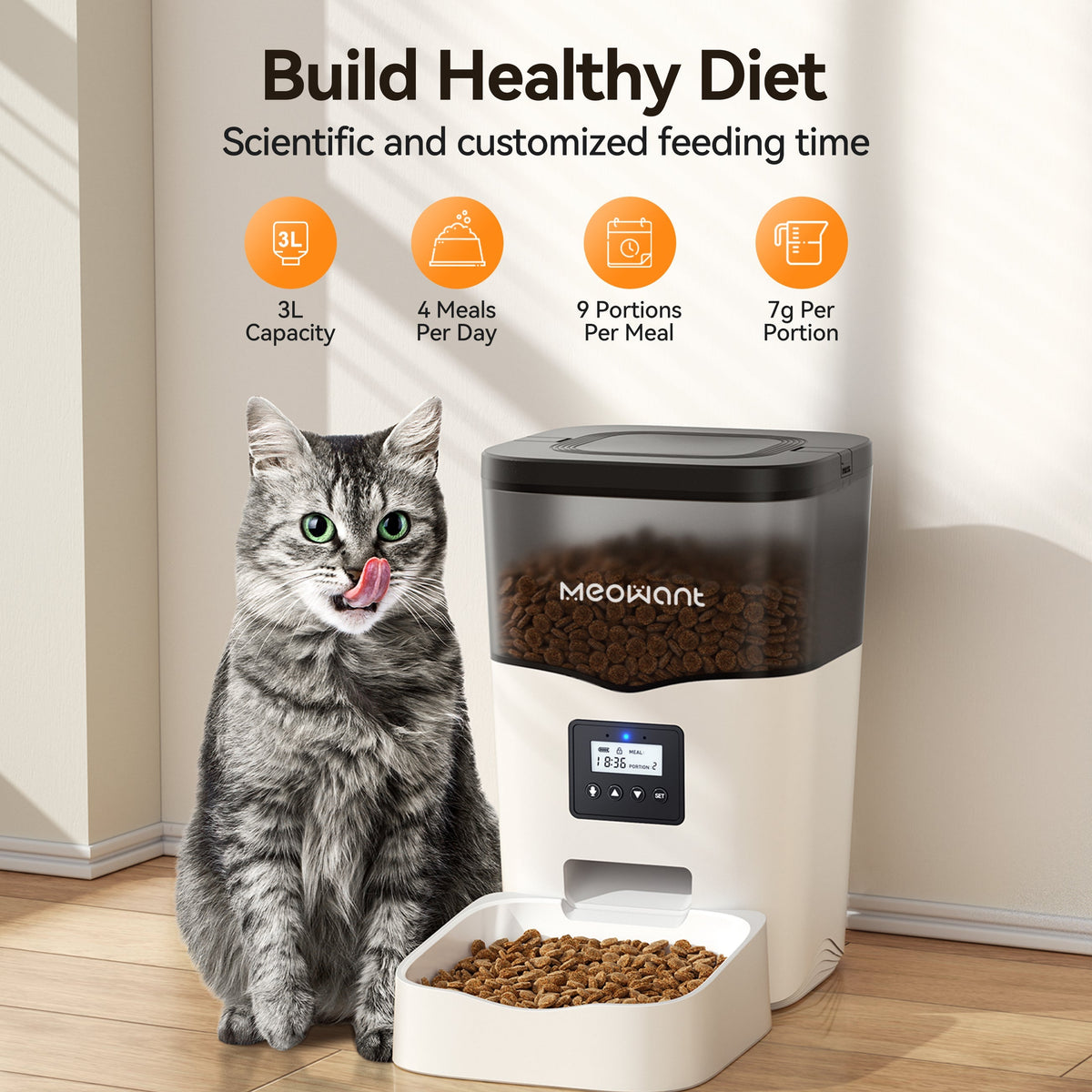How Much Should I Feed My Cat?

Feeding your cat the right amount isn't just about filling a bowl—it's about keeping your feline friend healthy, happy, and active for years to come. Many cat owners struggle with portion control, unsure whether their pet is getting enough (or too much) food. Overfeeding can lead to obesity, while underfeeding may leave your kitty malnourished or cranky. Factors like age, weight, and even lifestyle play a role. If you've ever wondered, "Am I feeding my cat the right amount?"—let's simplify the process and ensure your feline gets the perfect meal every time.
1. Factors That Determine How Much to Feed Your Cat
There's no one-size-fits-all answer when it comes to cat feeding. Several factors come into play:
1. Age Matters: Kittens are growing fast and burn through calories like little furry athletes. They typically need more food, and more often—three to four meals a day. Adult cats, on the other hand, need fewer calories and usually do well with two meals a day. Seniors might slow down and require fewer calories or special diets depending on their health.
2. Weight & Body Condition: If your cat's a little on the chunky side, it's time to scale back. An ideal-weight cat will have a visible waist when viewed from above and you should be able to feel—but not see—their ribs. Underweight cats will need more food or higher-calorie options. Still unsure? A quick vet visit can help you gauge their ideal weight range.
3. Activity Level: A zoomies-prone outdoor adventurer will naturally need more food than a couch-potato kitty who naps 18 hours a day. Playful cats burn more energy, so keep that in mind when measuring portions.
- Indoor, lazy cats burn fewer calories and often need less food.
- Outdoor or active cats may require 10-20% more food to fuel their energy.
4. Type of Food: Dry kibble is calorie-dense—stick to measured amounts (check the bag for guidelines). Wet food typically contains fewer calories per gram compared to dry kibble, so portion sizes will vary. Raw diets also differ greatly in nutrient density. Always check the feeding guide on the package, but remember, it's just a starting point.
5. Health Conditions: Cats with diabetes, kidney issues, or allergies often require prescription diets and tailored portions. Feeding too much (or the wrong food) can seriously affect their health.
If portion control is a struggle, consider the Automatic Cat Feeder. It dispenses precise meals on schedule, preventing overfeeding, great for busy pet parents or cats prone to begging. Plus, it keeps food fresh and helps maintain a healthy routine.
2. General Feeding Guidelines for Cats
Kittens (0-12 Months): Tiny Stomachs, Big Needs
Kittens grow fast and burn energy quickly. They need:
- 3-4 small meals per day (their stomachs can't handle large portions).
- High-protein, high-calorie food to support development.
- Wet food mixed with kibble for extra hydration and easier chewing.
Adult Cats (1-7 Years): Finding the Balance
Most adult cats thrive on:
- Two measured meals per day (morning and evening).
- 20-30 calories per pound of body weight (adjust based on activity level).
- Free feeding only if weight is stable (but many cats overeat when food is always available).
Senior Cats (7+ Years): Adjusting for Age
Older cats slow down, so their diet should adapt:
- Slightly smaller portions to prevent weight gain.
- More wet food to support kidney health and hydration.
- Easy-to-digest proteins to maintain muscle without straining digestion.
3. How to Measure the Right Portion
Guessing leads to problems—precision matters. Here's how to do it right:
- Check the food label for recommended serving sizes (but remember, these are just starting points).
- Use a kitchen scale for dry food (cups can be inconsistent).
- For wet food, divide cans according to calorie needs (e.g., half a 3oz can per meal).
- Monitor your cat's weight and adjust portions every few weeks if needed.
4. Signs You're Overfeeding or Underfeeding Your Cat
Overfeeding: Your cat's putting on extra weight, gets sluggish, or keeps begging even after meals—those are red flags. Also, extra treats count too (guilty here!).
Underfeeding: Noticeable weight loss, a ribby appearance, low energy, or constant meowing for food? Yep, those are signs they're not getting enough.
5. The Role of Automatic Feeders in Portion Control
Sticking to a feeding schedule can be tough, especially with busy routines. If you're struggling with portion control, busy schedules, or a food-obsessed cat , an automatic feeder can take the stress out of the equation.
I personally recommend the Meowant Automatic Cat Feeder. Here's why:
- Scheduled, precise meals: You can set up to 4 meals per day, each with up to 9 portions (about 7g per portion), which is great for cats who need portion control or have medical diets.
- Large capacity: The 3L storage means fewer refills. Perfect if you're not home all the time.
- Smart feeding = healthy habits: It helps establish a consistent routine and prevents overeating.
- Anti-clogging design & secure lid: No more food jams, and it keeps sneaky paws out.
- Supports all kibble sizes (2–15mm): So you won't have to switch food brands.
- Stays connected: You can even stay in touch with your cat while you're away, and that just gives peace of mind.
Final Thoughts: Feed Smart, Adjust as Needed
There's no magic number for every cat, watch their body condition and energy levels, and tweak portions accordingly. If manual feeding feels overwhelming, an automatic feeder like the Meowant can take the guesswork out of mealtime.
So if you've been asking yourself “How much should I be feeding my cat?”—start with the guidelines, observe your cat, and make small, thoughtful adjustments as needed. And if you want to take the guesswork out of it, I genuinely recommend trying the Meowant Automatic Cat Feeder. It's one of the smartest little investments I've made as a cat parent.
